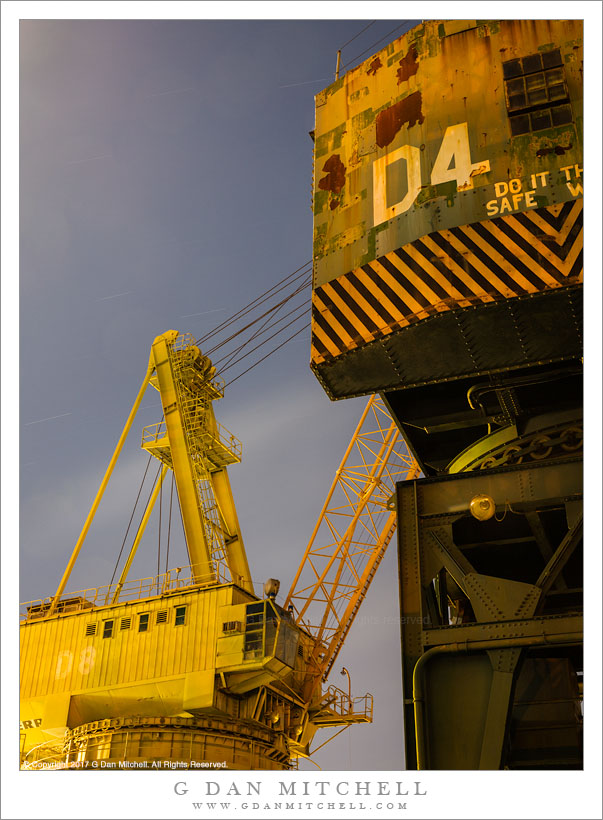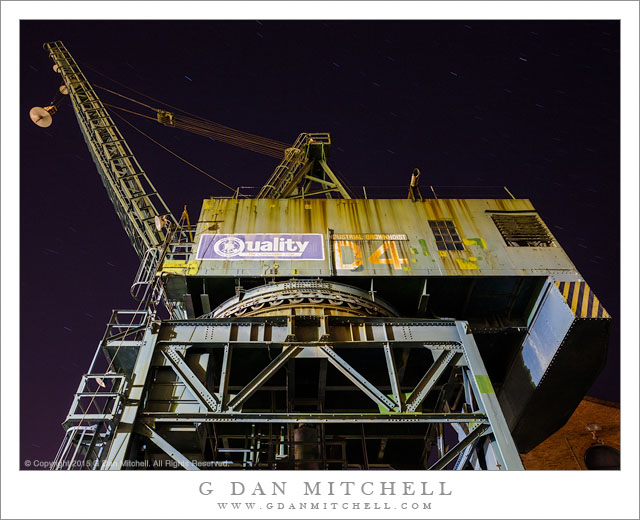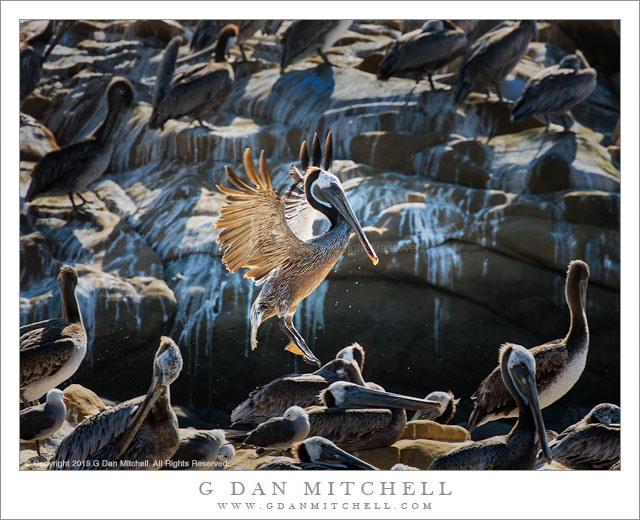
D4 — Do It Safe. Mare Island Naval Ship Yard, Vallejo, California. March 11, 2017. © Copyright 2017 G Dan Mitchell – all rights reserved.
Two shipyard cranes, Mare Island Naval Ship Yard
This past weekend I joined my friends from The Nocturnes, the San Francisco Bay Area night photography group for a night photographing at the historic Mare Island Naval Ship Yard. (Despite the similar names, this is a different group than Studio Nocturne SF, a group of photographers with whom I exhibit.) The location is a bit of a Mecca for night photography around here, and I’ve been photographing in this place for something like a dozen years, virtually always at night.
On this shoot I focused on a combination of some less obvious things that I’ve learned to see over many years of working this subject and some of the classic, iconic subjects at Mare Island. This photograph is in the latter category. These huge cranes, set on a system of tracks surrounding dry docks, are perhaps the most characteristic visual feature of Mare Island, especially since they tower high above the old historic buildings. My night photographs of this subject don’t exactly strive for an accurate image. To be honest, that would be an incredibly boring thing, since there is so little light that the subject is often barely visible on the scene. So my idea is to focus on “what the camera sees,” and I typically make very long exposures that collect enough of that faint light to make the subject more clearly visible.
 G Dan Mitchell is a California photographer and visual opportunist. His book, “California’s Fall Color: A Photographer’s Guide to Autumn in the Sierra” is available from Heyday Books and Amazon.
G Dan Mitchell is a California photographer and visual opportunist. His book, “California’s Fall Color: A Photographer’s Guide to Autumn in the Sierra” is available from Heyday Books and Amazon.
Blog | About | Flickr | Twitter | Facebook | Google+ | LinkedIn | Email
All media © Copyright G Dan Mitchell and others as indicated. Any use requires advance permission from G Dan Mitchell.


